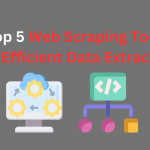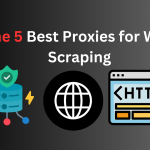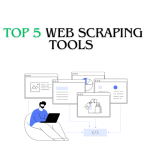Top 5 Web Scraping Tools to Boost Your Data Collection in 2024
In 2024, effective data collection is essential for any business or research project that relies on accurate, up-to-date information. Web scraping tools are key to gathering this data efficiently. Here, we review the top 5 web scraping tools to help you find the right solution for your needs, from automated scraping to powerful proxy support.
Table of contents [Show]
1. Scrapy
- Overview: Scrapy is an open-source and highly versatile Python-based web scraping framework. It’s great for both beginners and advanced users, offering an intuitive way to extract data from websites.
- Key Features: Data storage in various formats (JSON, CSV), middleware options, and fast crawling speed.
- Best For: Developers and data analysts with coding knowledge.
- Pros: Highly customizable, open-source, community support.
- Cons: Requires Python knowledge.
2. Octoparse
- Overview: Octoparse is a user-friendly, no-code tool perfect for those who want a quick start in web scraping without technical expertise.
- Key Features: Point-and-click interface, cloud-based data extraction, and scheduled scraping.
- Best For: Business users and marketers with minimal coding skills.
- Pros: No coding required, visual scraping, cloud extraction.
- Cons: Limited customization compared to code-based tools.
3. ParseHub
- Overview: ParseHub is another powerful, no-code scraping tool that excels in extracting complex data from websites with AJAX or JavaScript.
- Key Features: Interactive interface, works with dynamic sites, and multiple export formats.
- Best For: Users needing to scrape from JavaScript-heavy sites.
- Pros: Easy setup, great for beginners, handles complex websites.
- Cons: Paid plans needed for more extensive features.
4. Beautiful Soup
- Overview: Beautiful Soup is a Python library ideal for parsing HTML and XML documents. While it requires some coding, it’s flexible and perfect for custom web scraping projects.
- Key Features: HTML parsing, integration with Python libraries, efficient for small projects.
- Best For: Developers looking for a lightweight, flexible scraping tool.
- Pros: Lightweight, customizable, works with Python.
- Cons: Limited to HTML parsing, not a complete scraping framework.
5. Diffbot
- Overview: Diffbot is an advanced web scraping tool that uses AI to extract data from the web. It’s powerful but more suitable for enterprise-level users.
- Key Features: Machine learning, automatic API generation, high scalability.
- Best For: Enterprise users needing large-scale, AI-driven scraping.
- Pros: Highly scalable, AI-powered, API generation.
- Cons: High price point.
Conclusion
Each of these top web scraping tools offers unique features for specific needs in 2024. Whether you’re a beginner looking for an intuitive solution or an advanced user needing a powerful framework, these tools provide effective options to supercharge your data collection.






